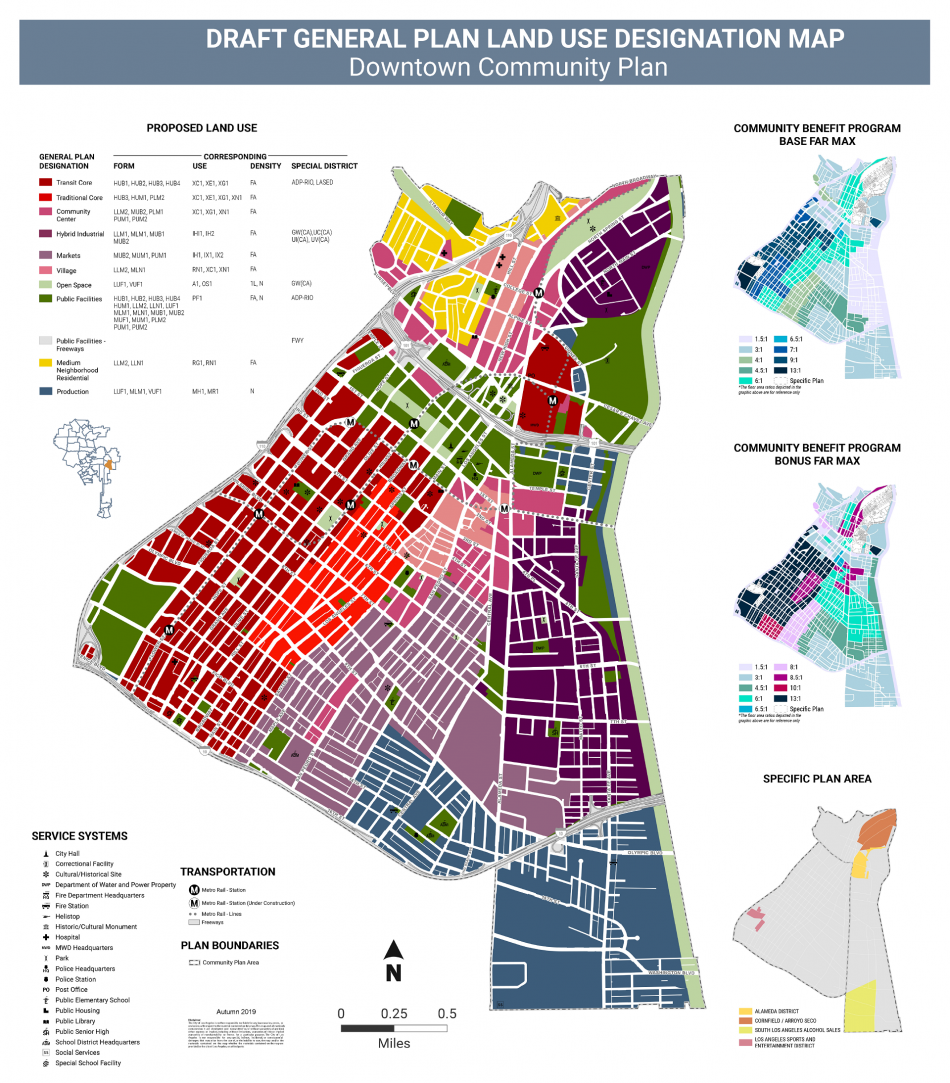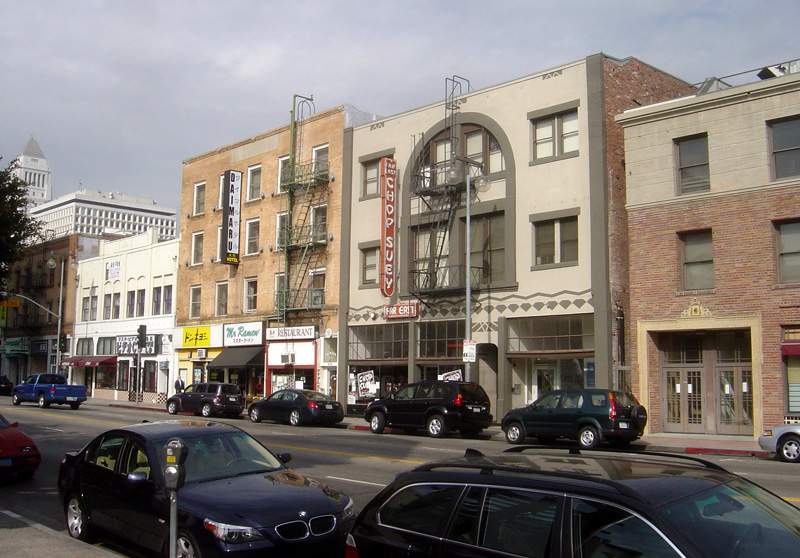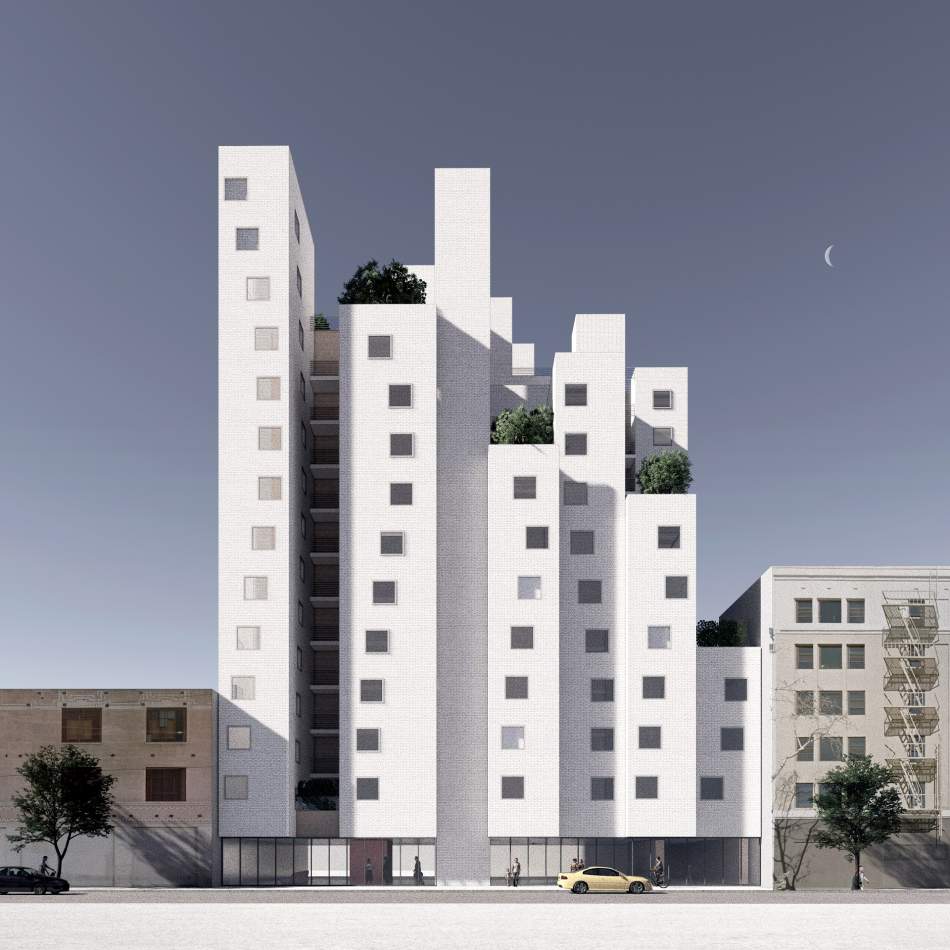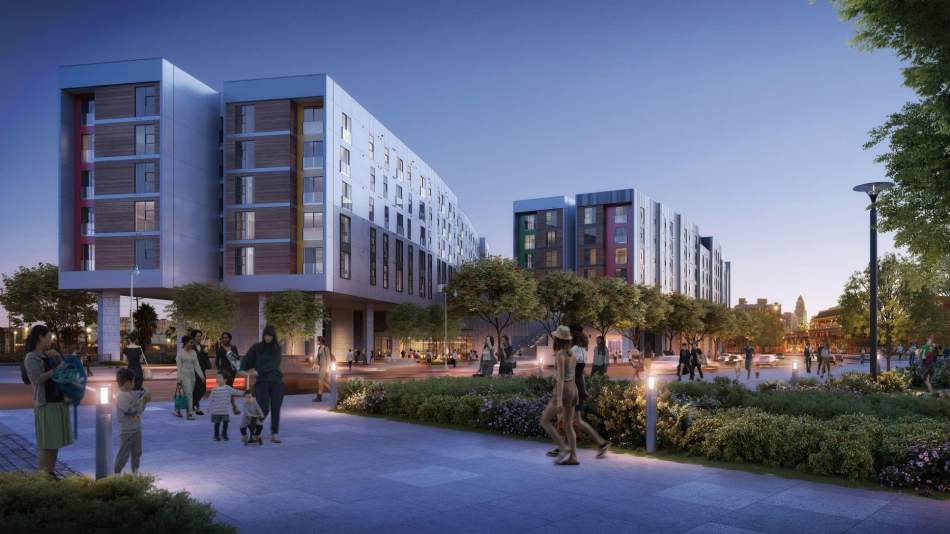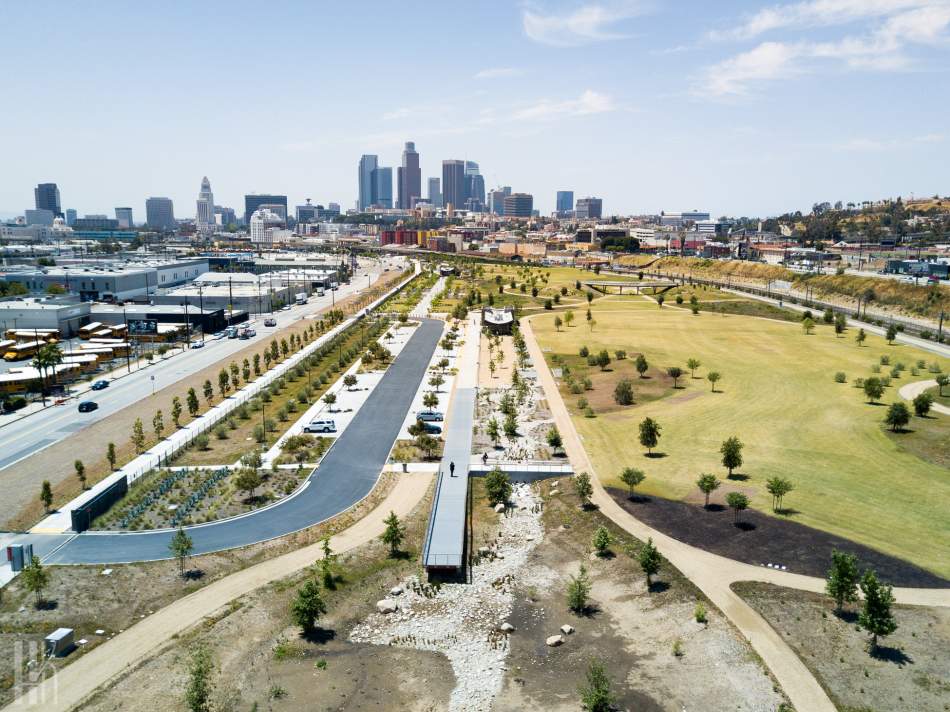In August, the Los Angeles Department of City Planning published the draft zoning map for the new Central City and Central City North Community Plans. The update, which is packaged as DTLA 2040, would enable new housing construction across a broad swath of the Downtown neighborhood, potentially accommodating up to 125,000 new residents and 55,000 new jobs while stripping away mandatory parking requirements for new developments.
The updated zoning map reflects minor changes to a version published in November 2019, shifting or shrinking the boundaries of certain districts. An interactive story map created by the Planning Department offers a closer look at the zoning for each property within the plan boundaries, as well as corresponding districts that establish rules for building form and frontage, density, and allowable uses.
While DTLA 2040 proposes significant zone changes relative to current conditions - nearly doubling the area where housing is allowed and tripling the land on which mixed-use buildings are permitted - it also proposes changes to how developments are processed in the Downtown area.
Since 1988, developers have relied on the "Transfer of Floor Area Rights" process (TFAR) to construct taller and larger projects than would otherwise be allowed. While TFAR has made a mark on the Downtown skyline, the process of purchasing air rights can take multiple years to be completed. Additionally, the ability of elected officials to decide what projects, causes, and organizations receive TFAR public benefits payments has resulted in increased scrutiny on the process - particularly in the wake of the ongoing City Hall corruption investigation.
DTLA 2040 proposes moving away from TFAR toward a base-bonus system, akin to the state SB1818 density bonus law or the City's Transit Oriented Communities program (TOC). Rather than simply paying a fee to the City to purchase additional development rights, project applicants would instead be required to provide on-site public benefits such as affordable housing or publicly-accessible open space.
The shift away from TFAR has been welcomed by Central City United (CCU) – a coalition comprised of the Southeast Asian Community Alliance (SEACA), Little Tokyo Service Center (LTSC), the Los Angeles Community Action Network (LACAN), and Public Counsel – which has banded together to urge changes to the DTLA 2040 plan.
“[Planning] did a report back on the TFAR program about a month or two ago where they found that the bulk of funds went to the streetcar and Pershing Square – so not even other parks in Downtown,” said Sissy Trinh, the executive director of SEACA. “The [DTLA 2040] community benefits plan is more public and transparent, but until we get the details, we won’t commit to supporting it.”
“It’s better to have standard benefits across the plan area, rather than case-by-case negotiations,” said Greg Bonnett, a staff attorney with Public Counsel. “Not to say that specific projects shouldn’t warrant additional conditions, but there should be uniform minimum community benefit requirements.”
CCU, whose organizations collectively represent the Chinatown, Little Tokyo, and Skid Row communities, has focused its efforts on the provision of on-site affordable housing, anti-displacement measures, and protections for community-serving businesses in the DTLA 2040 plan.
"The Downtown plan lumps everything together," said Trinh. "A lot of the folks engaged in this process will be representatives of developers and property owners in Bunker Hill and near Staples Center. Our communities would be forgotten about, or in some ways bulldozed over."
In Chinatown, a handful of new development, in conjunction with the expiration of affordability covenants at existing buildings, have led to an influx of higher-income renters. While gentrification has put many of the neighborhood's long term tenants on the cusp of homelessness, the impacts to the community's businesses have also impacted the neighborhood.
While the arrival of Howlin' Rays and other restaurants have established Chinatown as a culinary destination, the neighborhood's rising cachet among foodies has not necessarily benefitted other longtime establishments. Trinh points to the recent closures of four neighborhood grocery stores and the impending loss of Chinatown's last optometrist as examples.
To combat this trend, the "People's Plan" produced by Central City United has proposed a slew of policies intended to preserve and promote neighborhood-serving businesses in Chinatown, Little Tokyo, and Skid Row. These include streamlined permitting for institutions such as day care establishments, swap meets, and wholesale businesses, but also incentives to encourage developers to include space for sidewalk vendors or offer reduced rent for community-serving stores.
Besides policies to preserve existing communities, CCU's People's Plan also proposes strategies to maximize affordable housing production in the Downtown area and extract greater public benefits from private development.
The Downtown plans, as currently envisioned, are anticipated to accommodate 20 percent of the City's future housing growth in just 1 percent of its land area. Within that area, DTLA 2040 proposes to zone the blocks bounded by San Pedro Street, 5th Street, Central Avenue, and 7th Street as IX1, which would restrict all future residential development to affordable housing.
"IX1 is a great idea," said Steve Diaz, an organizer with LACAN. "But it's also a horrible idea in that it overlooks historic Skid Row boundaries."
Diaz and CCU, citing the income levels and needs of residents in Skid Row, have proposed that the IX1 district should be expanded to also include the blocks between Main, 3rd, and 8th Streets. The People's Plan would also disallow moderate-income housing - units catering to households earning up to 120 percent of the area median income- within the IX1 zone.
The recent update to the DTLA 2040 map, according to Bonnett, leaves the IX1 boundaries unchanged, but also relaxes some restrictions on housing construction in the abutting blocks. This change could have unintended consequences for residents of Skid Row, according to CCU.
"As the areas surrounding Skid Row have gentrified, we've seen increasing police harassment of unhoused people," said Trinh.
While the CCU plan echoes the City's pivot away from the TFAR process, it also seeks changes to the structure of DTLA 2040's affordable housing bonuses and community benefits program.
According to Faizah Malik, an attorney with Public Counsel, the community benefits program as currently conceived would offer greater density bonuses than the City's TOC guidelines while netting less affordable housing. The CCU plan proposes that Downtown's affordability set-asides should be aligned with those of the TOC program, so as not to undermine housing production citywide.
The focus on value capture extends to recommendations toward the expansion of development capacity in the DTLA 2040 plan. While the City's plan proposes significant upzoning throughout the Downtown area, the CCU counter proposal would leave base floor area rights unchanged from the existing plan. However, the People's Plan would keep the higher bonus floor area rights as a way to increase value capture and public benefits through new construction.
Planning, in response, has committed to revisiting and the issue of base floor area rights in subsequent updates to DTLA 2040.
In addition to tweaks to the affordability set-asides of the Downtown plan, the CCU coalition is also seeking a strict requirement for on-site provision for affordable housing.
"It's a matter of principal, but also practicality," said Grant Sunoo, Little Tokyo Service Center's Direct of Planning. "There's very little guarantee that you will actually see these affordable units if they're not on-site."
The issue of on-site affordable housing in Downtown projects has frequently reared itself at City Planning Commission and City Council Planning Committee hearings. The Planning Commission, which is comprised of appointees of Los Angeles Mayor Eric Garcetti, has frequently imposed affordable housing set-asides on projects originally proposed as fully market-rate developments, only to see those requirements reversed at the Council level in favor of an in-lieu payment or public benefits agreement. The base-bonus system proposed in DTLA 2040 would sidestep the political maneuvering that occurs between the two bodies, instead setting uniform standards for all Downtown developments.
"Overall, we're encouraged by the changes that the Planning Department is exploring," said Trinh. "But obviously, the proof is going to be in the actual draft. This plan was drafted when the market was hot and unemployment was low, and now we're in the middle of a pandemic. The circumstances we're operating in have changed - how are we planning post-COVID-19, pre-eviction tsunami, and post-'Black Lives Matter'? They want to incorporate racial equity more strongly - where is it in this plan?"
The Downtown Community Plans are currently in the midst of its community outreach period. The public comment period for DTLA 2040 was recently extended through December 4, 2020. To provide feedback, visit the DTLA 2040 plan's website.
For more information on the CCU People's Plan and its recommendations, visit the organization's website.
- DTLA 2040 (Urbanize LA)





